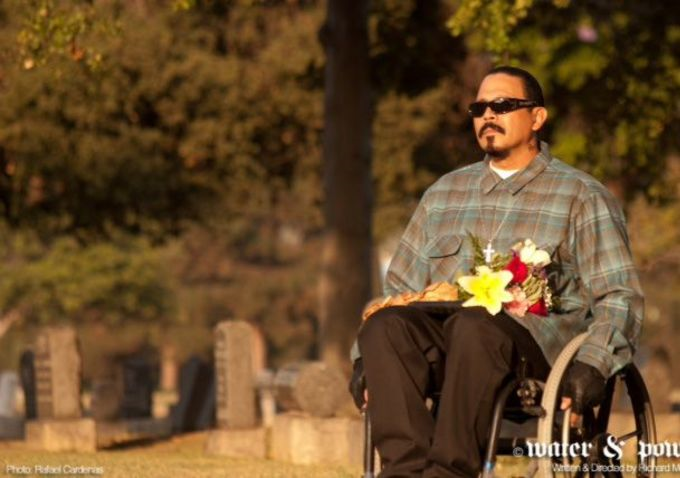
In the 2004 film A Day Without a Mexican the director plays with the concept of disappearing all Mexicans in the United States. Although racists, anti-immigrant(anti-Mexican) rhetoric seems to have been re-popularized by the Trump campaign, this film does well to show just how vital the Latino (working) immigrant class is in the United States. Although the relationship between the United States and Mexico seems to be one-sided, that is Mexico is heavily dependent on its cross-country counterpart, this film examines the dependency the US economy has on the Latino labor force and forces its viewers to imagine what life might be like (if the tea party’s dream came true) and there was a day without a Mexican.
The scenes at the beginning of the film depicted commonly held beliefs about what Latino immigrants bring to the US. The blonde anti-immigrant protestor did beautifully in the news segment to describe what these immigrants mean to the United States of America. “We are Americans. Simply defending our land and our values from those who would cross the border that border without permission. White people are disappearing and its our country. They come here and take our job, get on welfare, and bring their drugs into this country…and steal. Steal our way of life.” This anti-immigrant protestor’s beliefs shed a light on the racism and ignorance that permeates through white society on the topic of the Latino immigration. Senator Abercrombie also does well to highlight the ignorance and goes a step further by showing the dependence he has of Mexicans in his personal life. He angrily confronts his wife for hiring “illegal Mexicans from Honduras and Guatemala” while being served breakfast by his maid, a Mexican immigrant who cooks him a Mexican dish. His Nanny is such an important part of his life that she is entrusted with cooking his meals and even scolds him about staying on his diet.
To contrast the beginning of the film society is thrown into a state of panic when it is discovered that “family members, trusted workers, and businesses owners” have disappeared off the face of the Earth. The farmer interviewed by the news station understands the importance of immigrant labor. “California depends on these people to make these fields work”. This is only one example of the dependence the American economy has on the Latino worker. On a more personal level Senator Abercrombie’s home is thrown into a panic when it is discovered that their nanny Catalina did not show up to their home to complete the many tasks she is responsible for. “There’s nor fresh juice, there’s no clean clothes, there’s no lunch. Where did she put the peanut butter?!” California is thrown into such a state of panic that a State of Emergency is put into affect, showing just how vital the Latino immigrant is to the infrastructure of the United States.
I am the son of someone who crossed the border illegally, attained citizenship and started his own business as a gardener. I am proud of everything my parents have done to give me a better life and I know the struggles they went through in a country as unwelcoming as the US. I enjoyed this film because it shows just how important Mexicans are in keeping the US machine going.




